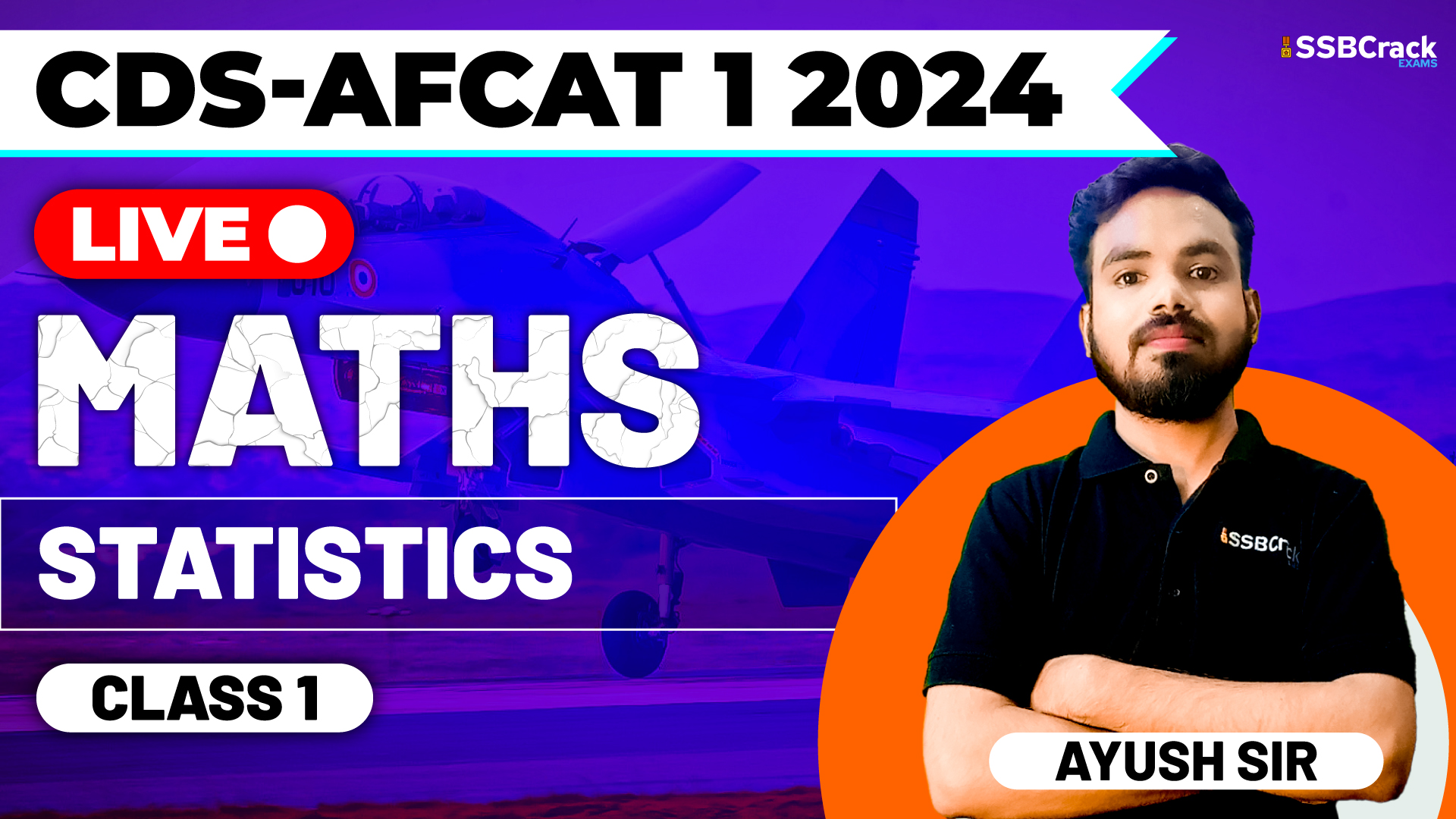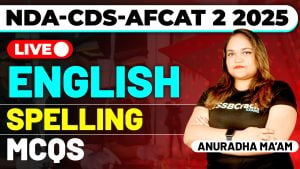Statistics, the science of collecting, analyzing, interpreting, presenting, and organizing data, is a critical component of the AFCAT-CDS 1 2024 Exam Math Statistics Class 1. This live session delved into the fundamental concepts of statistics, demystifying the intricacies of data, measures of central tendency, and more. In this blog, we’ll explore the key insights from the class, shedding light on the definitions, examples, and problem-solving strategies discussed.
Understanding Basic Concepts: The class commenced with a comprehensive overview of basic statistical concepts, laying the groundwork for a deeper exploration of more complex topics. From the definition of statistics to the various components of data, participants were introduced to the essential building blocks of statistical analysis.
- Definition of Statistics: The instructor elucidated the definition of statistics, emphasizing its role in collecting, analyzing, and interpreting data. Participants gained a clear understanding of the broader scope of statistics and its applications in real-world scenarios.
- Data and Its Types: The discussion extended to the concept of data, covering both qualitative and quantitative types. Participants were immersed in understanding the distinctions between categorical and numerical data, setting the stage for more advanced statistical analyses.
Measures of Central Tendency: The heart of statistical analysis lies in measures of central tendency, which provide insights into the center or average of a distribution.
- Mean: The class delved into the concept of mean, providing participants with a clear understanding of how to calculate the average of a set of values. Practical examples were presented to illustrate the application of the mean in real-life scenarios.
- Median: The instructor dissected the median, a measure that identifies the middle value in a dataset. Participants explored how the median offers a robust alternative to the mean, especially in situations with outliers or skewed distributions.
- Mode: The class then shifted focus to mode, highlighting its significance as the most frequently occurring value in a dataset. Participants learned how mode complements mean and median in providing a comprehensive view of the central tendencies of a dataset.
Problem-Solving Strategies: Throughout the class, theoretical discussions were complemented by practical examples, equipping participants with problem-solving strategies applicable to a variety of scenarios.
- Real-world Applications: Practical examples were presented with a focus on real-world applications. Participants were guided through scenarios where the concepts discussed in class could be applied, fostering a deeper understanding of statistical principles.
- Problem-Solving Techniques: The class went beyond the basics, introducing problem-solving techniques that participants could employ to tackle a diverse range of statistical problems. From understanding the context of the data to choosing the appropriate measure of central tendency, candidates learned to navigate statistical challenges strategically.
Combined Mean and Weighted Mean: As the class progressed, attention turned to more advanced topics such as combined mean and weighted mean, providing participants with a comprehensive toolkit for analyzing complex datasets.
- Combined Mean: The concept of combined mean, where the mean of two or more datasets is calculated, was explored. Participants learned how to aggregate data effectively and compute a combined mean that accurately represents the entire dataset.
- Weighted Mean: The class delved into the weighted mean, a measure that assigns different weights to different values in a dataset. Participants gained insights into how weighted mean can be applied in situations where certain values carry more significance than others.
Conclusion: AFCAT-CDS 1 2024 Exam Math Statistics Class 1 was not just a theoretical exploration of statistical concepts; it was a practical journey through the intricacies of data analysis. By understanding the definition of statistics, the types of data, and measures of central tendency, participants gained a solid foundation for approaching statistical problems.
The discussion on combined mean and weighted mean added layers of complexity, preparing candidates for the nuanced statistical analyses that may arise in the upcoming exam. Practical examples and problem-solving strategies ensured that participants weren’t just acquiring theoretical knowledge but were also developing the skills needed to apply statistical concepts strategically.
As candidates continue their preparation journey, the insights gained from Statistics Class 1 will serve as a valuable asset. Armed with a thorough understanding of basic concepts and advanced measures of central tendency, participants are now better equipped to tackle the statistical dimension of the AFCAT-CDS 1 2024 Exam with confidence and precision. Statistical mastery, once perceived as complex, has been unveiled, thanks to the comprehensive insights and practical knowledge imparted in AFCAT-CDS 1 2024 Exam Math Statistics Class 1.





















